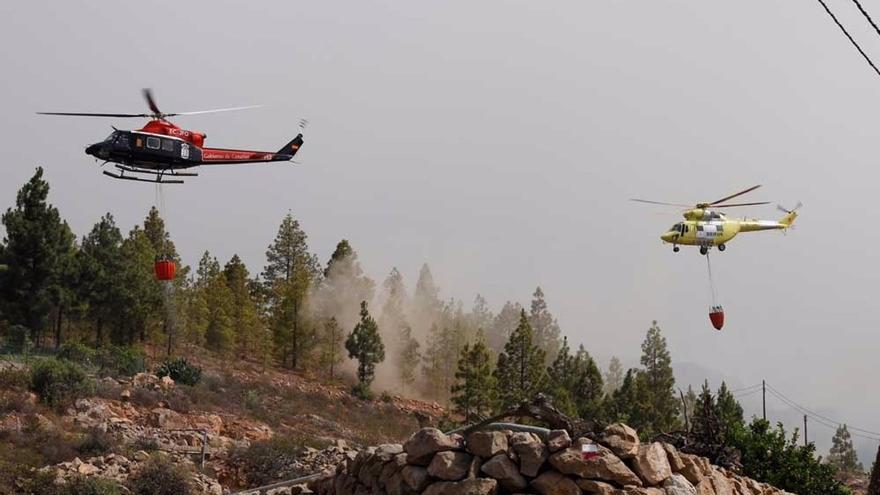
The delegate of the Higher Center for Scientific Research (CSIC) in the Canary Islands, Manuel Nogales, has shown his concern about the possible loss of endemic species of flora and invertebrates as a consequence of the fire that has affected the Forest Crown of Tenerife since Tuesday. Specifically, Nogales focuses on six endemic species of flora that are affected, to which a seventh can possibly be added: the cabezón de Añavingo, the pico de paloma, the alamillo de Acentejo –the three typical of the Island–, the cedro canaria, the garbancera canaria and the orchid of the ravine of Añavingo.
All these species, remember, have some degree of protection, either vulnerable or critically endangered. What worries the most is pigeon beakof which there were only three natural populations recorded on the island, all of them in pine forest areas that have been affected by the forest fire, for which reason it is believed that many of the remaining specimens may have been lost.
Nogales explains to the Efe agency that in the area affected by the fire there are three great habitats: the Canarian pine forest, which is distributed along the entire mountain range and which constitutes the main forest reserve of the Island; a mixed Canarian pine forest that also has elements of the laurel forest –basically holly holly, laurels and fayas–; and an old strip of laurel forest that once connected Teno with Anaga between 400 and 700 meters above sea level.
Especially worrisome is the loss of this laurel forest, of which only a few well-preserved redoubts remain in Anaga and Teno, at either end, but also on the slope of Tigaiga, in Los Realejos, and in other points that “were recovering a lot in recent decades” and are possibly burning.
Animals in danger
As for vertebrate animals, the expert does consider that “things get quite complicated”, since there are almost twenty endemic species of the island and the Canary Islands that inhabit the area of the fire. «We have at least five or six species of bats, some endemic, such as the Canarian long-eared bat, which is only found in Tenerife, La Palma and El Hierro and lives a lot in pine forests, or the Madeira bat, the long-eared or the forest bat. », details.
as far as reptiles As regards, the three species that could see their habitat destroyed are all endemic to the Canary Islands: the typhoon lizard, the Delalande perenquen and the golden mullet -the latter typical of Tenerife-.
And from the point of view of the birds, eight species threatened by llamas are endemic to the islands, including the blue chaffinch, which “is the most striking, because it is endemic only to Tenerife, since there is another subspecies in Gran Canaria” and whose young specimens are just developing, since this is the breeding season for them. In addition to the blue chaffinch, the common canary finch, the Great Spotted Woodpecker, and the Turqué and Rabiche pigeons are also affected. Regarding the last two, the affected area is one of the most important pigeon reserves on the island.
All these animals, which can move to other areas, are going to have to “adapt to all this catharsis that is taking place in their way of life,” highlights Nogales. From the point of view of invertebrates, which Nogales acknowledges are “one of the great forgotten” when it comes to calibrating the effects of flora and fauna. There are some 200 endemic species that could be affected, despite the fact that this is not a “very important” place in terms of the presence of these animals.
It is a community of invertebrates that does not live in the pine forest itself, but in the volcanic caves that exist under the surface, and whose Populations “are the richest in the world”to the point of having more endemism than in Hawaii or the Galapagos, archipelagos similar to the canary due to their volcanic characteristics.
…….
Contact of the Environment section: [email protected]
















